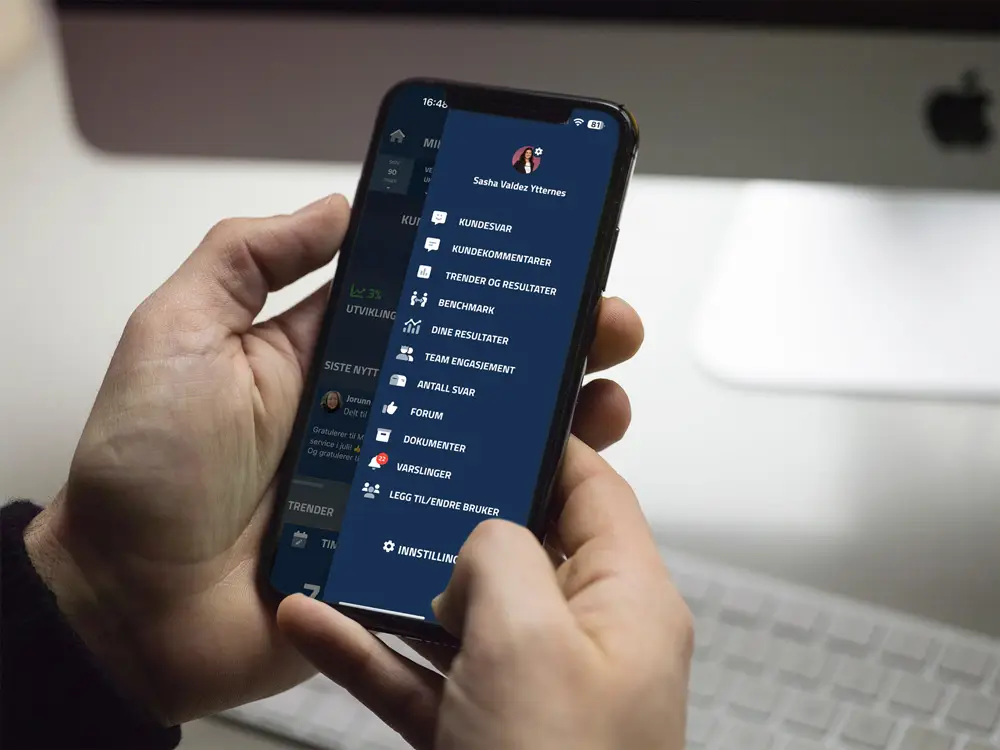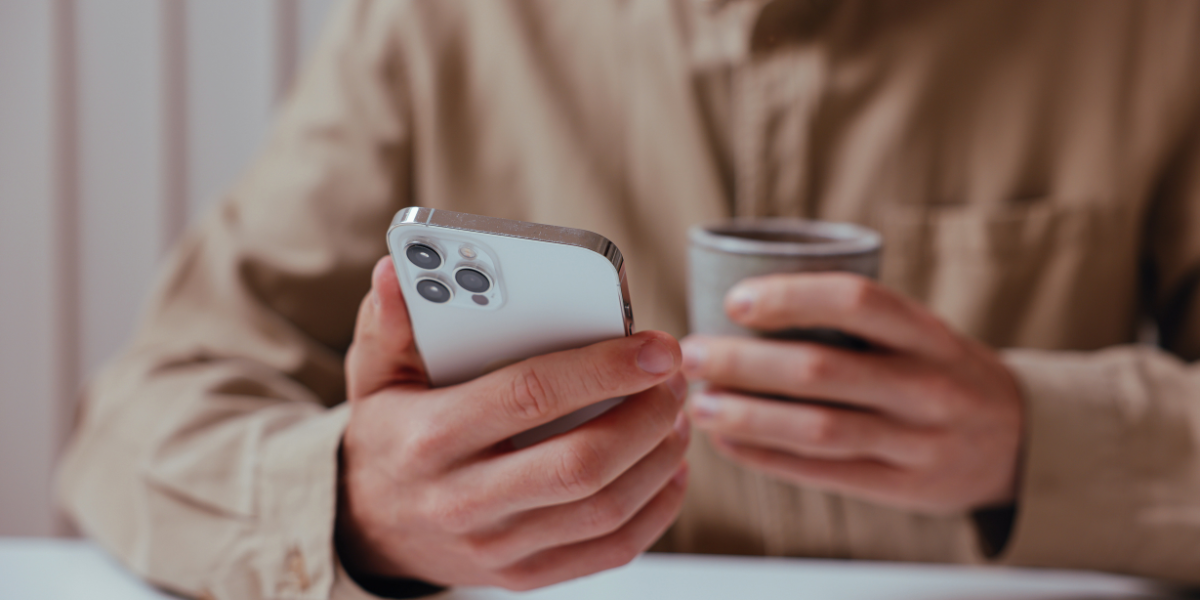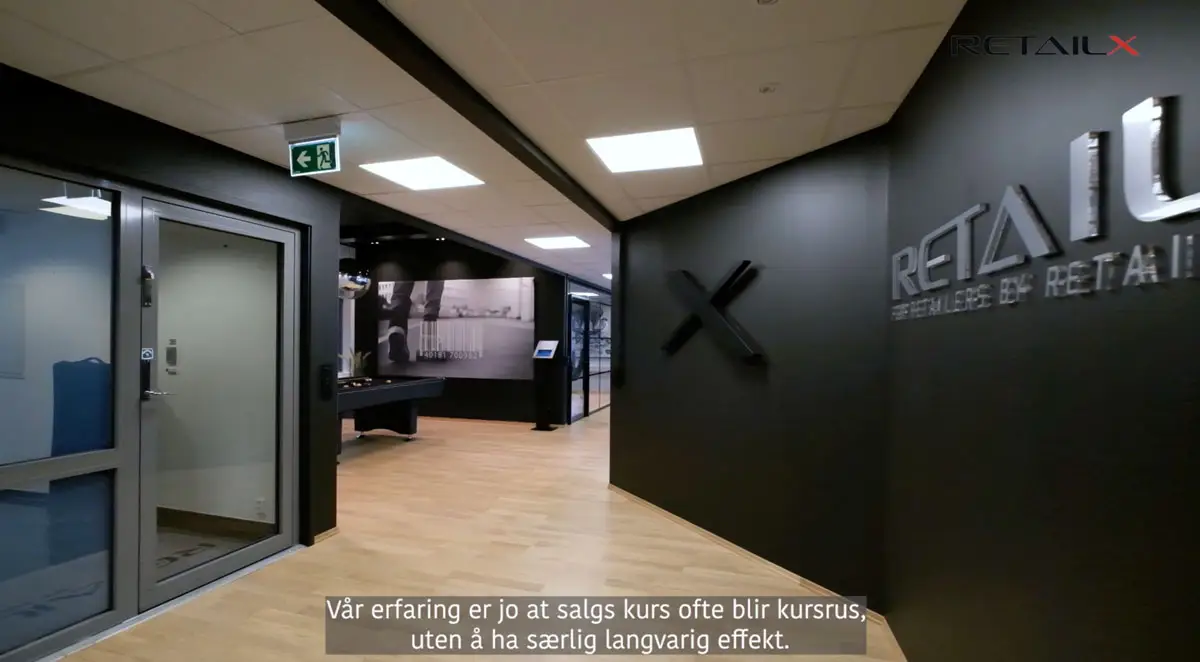RetailX took advantage of the standstill when the pandemic broke out to develop the Excite tool to help shopping centers and stores improve their customer satisfaction.
Nils Vanebo
- Historically, shopping centers have had little data to assess the level of service in the stores at the center. We wanted to do something about this by developing the Excite tool," says Anneli Brodin, partner at RetailX, to Retailmagasinet.
Through Excite, large amounts of data are collected from shoppers in shopping centers that will provide the basis for increased rental income through changes in employee behavior. Both the center management and the stores will receive information about the actual service level at the center and the impact it has on sales.
- The aim is to provide the insight to work with service improvement through positive reinforcement, build a stronger performance culture and select winners," says Brodin.
Utilized the pandemic to develop tools
When Norway shut down in 2020, a lot of things came to a halt in the Norwegian business community, and RetailX suddenly lost a lot of revenue.
- "We could wait for it to pass, or we could use the opportunity to develop the tool we had been asking for and looking for for years," says Brodin. They put significant resources into the development in collaboration with some of the largest shopping center chains who could tell us about their needs.
Never before has so much data been collected about the customer experience at Norwegian shopping centers, according to RetailX. To process and analyze the data, they have collaborated with the analysis company Opinion.

Anneli Brodin is a partner at RetailX, the company behind Excite. Photo: RetailX
As of January 2023, more than 500,000 customer responses have been collected across just under 100 shopping centers.
The solution was launched in Q4 2021. Anneli Brodin explains that customer feedback is collected from all available sources: tablets, Facebook, Instagram, the center's customer club, the center's website, guest WiFi and QR codes.
They have used a proven and standardized form as a basis.
- "We wanted to create a survey that is easy for the customer to answer and that provides many answers. It takes a short time for the customer to respond, and we see that the willingness to respond is great and still increasing," she says.
The questions in the survey vary from industry to industry in order to be accurate and relevant.
It has been an important principle for RetailX that the Excite app should be available to all employees at the center, and the pricing model takes into account the importance of everyone having access, without this being too costly for the center.
- "If we are to be aware of customer satisfaction at the center, all employees at the center must have access to this data. It's everyone's business how the customer experiences service in the store," says Brodin.
Measurement VS feedback
Anneli Brodin points out the differences between measurements and real customer feedback - feedback from real customers:
- When it comes to measurements, it is challenging to get store employees to understand what they can do to improve. The measurements are declarative, and there is little data behind them. That's why we wanted to develop a tool that went from measurement to feedback. When a store employee receives direct feedback on how a customer experienced the customer visit, something happens.
Shopping centers have had different methods and approaches to the customer experience over the past 20 years. Mystery shopping has historically been the most widely used.
- "If you want to increase store sales and rental income at the center, 1-4 annual mystery shopping visits - which are often what you can afford - do not provide sufficient data for improvement work in the store," says Brodin.
She doesn't want to talk down the mystery shopping product, because it's a product they have delivered themselves.
- But mystery shopping is not based on real customers. "It's a relatively expensive method and can never obtain large volumes of data because of the costs involved. It becomes a subjective assessment by the observer," she says.
A store manager who receives a negative mystery shopping score will often know which store employee the customer feedback was about. This rarely leads to anything good.
- If you want to use the data for something, everyone in the store needs to recognize what they need to improve on," says Brodin.
Success factors
Anneli Brodin points to four factors that the most successful centers meet:
- Prepare an annual plan, channels for collecting customer responses, and how to use these throughout the year
- Starting with a kickoff - to create a desire to improve
- Conduct good training of the tool (here you set goals and choose which other centers you want to compare with)
- Holds regular store manager meetings that engage and involve - with
a focus on awarding diplomas to stores with good development.
In the best centers, there is a high level of commitment and job satisfaction. Many center managers are enthusiastic and put a spotlight on this. Enthusiasm is contagious. Cohesion and performance culture affect results," says Anneli Brodin.
Key findings from the customer experience in Norwegian shopping centers
RetailX is based on the methodology CSAT, Customer Satisfaction Score. The scale goes from 1 to five,
We strive for a full pot, and report the proportion of s's/top scores," says Brodin.
The average across all industries in 2022 was 72%.
A good ending is most important - A key question is to find out
- A key question is to find out what affects customer satisfaction in a shopping center the most?
- Opinion analyzed our data and found that a good end to the customer visit is by far the most important variable, across all industries.
The conclusion is very clear. On this factor, the impact on customer satisfaction is particularly high. For the 79% of customers who experienced a pleasant ending, satisfaction is 93%, compared to only 8% for the 21% who did not experience a pleasant ending in the store.
- After all, it's the ending that the customer remembers best," says Brodin.
She emphasizes that it is important that all store employees are aware of how important this factor is. Both those who are out and about meeting customers on the shop floor and those at the checkout.
The welcome is also important
Other factors that are decisive for satisfaction are being nice and offering yourself, and being welcomed with a smile and a 'hello'.
The welcome also affects upsell and upsell share: 58% of those who received a good welcome were offered an upsell, compared to 32% of those who did not experience a good welcome.
Another statement in the survey is: " The employees asked questions about what I was looking for.
77% did, resulting in 96% satisfaction. The remaining 23% gave 44% satisfaction.
Personal help
he second question in the survey is: "Did you get personal help from an employee?"
84% felt that they received help, resulting in 86% satisfaction. 16% did not receive any help, resulting in only 41% satisfaction. It is therefore important that the customer experiences personal help.
After the pandemic, rosters have become tighter. If the store employee is alone in the store, it is not easy to serve several customers at the same time. You have to be smart about it.
- Can you show that you see a customer coming in even if you're busy serving someone else? The answer is yes. There are methods and techniques for this that you can practice," says Anneli Brodin.
Four hypotheses that turned out to be right
RetailX wanted to go from gut feeling to knowledge. They came up with four hypotheses that they tested in the survey:
Hypothesis 1: Customer service drops in peak season
The hypothesis turned out to be correct. Customers express clearly the lowest customer satisfaction in the holiday month of July.
- This month, Norwegian consumers have plenty of money to spend, but it's also holiday time with extra helpers and summer temps in the stores. And rosters are at their tightest. "Center managers and chains need to be aware that holiday temps also need to be trained in the kind of behaviour that makes for satisfied customers. You have to prepare for the summer," says Brodin.
Hypothesis 2: Customers who experience a good welcome have higher satisfaction and shopping basket.
The survey showed that 77% felt that they received a good welcome, resulting in a satisfaction rate of 94%. The 23% who did not experience a good welcome reported a satisfaction rate of weak1%.
- "The welcome has a lot to do with the customer meeting. It's important to come out of the jump correctly," says Brodin.
Hypothesis 3: A relevant product recommendation results in high satisfaction, not just higher average sales.
It was true. The 72% of customers who received such a recommendation from a store employee reported a 97% satisfaction rate, compared to only a 46% satisfaction rate for the 28% of customers who did not experience a relevant product recommendation from staff.
Hypothesis 4: We can greatly influence whether or not a customer shops in store.
- There are many reasons why customers don't shop. Our survey shows that we can actually do something about 46% of these reasons ourselves. Knowledge about this in each store is important in order to increase sales," says Anneli Brodin.



